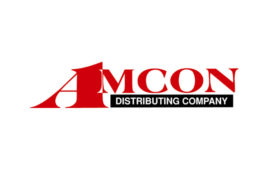 By Bill Scott, President, StoreReport LLC
By Bill Scott, President, StoreReport LLC
While this rule may not apply to all types of retailers, in the convenience store environment, it makes a lot of sense. Aside from the fact that convenience stores generally have limited storage space, they are not receiving the margins necessary to offset the cost of maintaining overstock.
But that’s not all. What might be regarded as acceptable during periods of inflation, quickly becomes unacceptable when prices stagnate, or worse, we move into a period of deflation. Storing unneeded stock can be a ticking time bomb that is waiting to go off when you are least prepared to deal with it.
COSTS INVOLVED IN OVERSTOCK IS RISING
The cost of overstock versus the cost of out-of-stocks is a thin line that can suddenly go one way or the other with no warning and with catastrophic results. There is also the issue of finite, working capital. Most retailers are paying little or no attention to how much inventory they possess or how long it has been in their stores. Accumulations of slow-moving inventory on store shelves and in stockrooms continues to rise at an alarming rate.
The systems currently being used to navigate through this mine field are severely antiquated and produce at best, periodic information that is worthless in dealing with timely decision-making efforts. Adequate systems are virtually unknown to many convenience store retailers, even larger ones, made more problematic due to the fact that each store is being poorly managed and run as an entity unto itself, and every location can be unique according to its clientele, location, etc.
OVERSTOCK IS KING
While doing in-depth analysis involving many of our customers’ stores, we have discovered that the industry standard seems to be to carry twice the inventory needed to meet a store’s customer service level. This is due in no small part to store managers being ‘unable’ to work with their suppliers to insure the stores are not reordering items that produce little of no sales. I emphasize the word ‘unable,’ because in most cases, store managers are untrained to do anything other than checking out customers at the sales counter.
DISPELLING A POPULAR MYTH
The idea that less inventory makes the store look picked over is only true if the current number of gondolas remain in their place. Without spending additional funds, retailers can easily redesign their sales areas by removing gondolas, widening aisles and employing displays, plants and unique decorations that are both appealing and solve the problem of eliminating empty spaces.
When I began working with convenience stores in 1981, I blamed the suppliers for overstocking these stores. It didn’t take me long to discover that the suppliers began doing exactly what the retailers requested, and with limited participation on the retailer’s part, things just got out of control.
Today, suppliers are beginning to understand the current state of affairs is hurting them as well, but due to the retailers’ unwillingness to get involved, both suppliers and retailers are becoming dissatisfied with the results.
SELL IT BEFORE YOU BUY IT
Generally, suppliers work on a 10-day billing cycle. By taking delivery on only what can be sold before the invoice comes due, you should be able to reduce your investment in inventory to a small amount of safety stock, and not only will you have more working capital to deal with contingencies, the amount of working capital saved will increase the value of your store(s).




